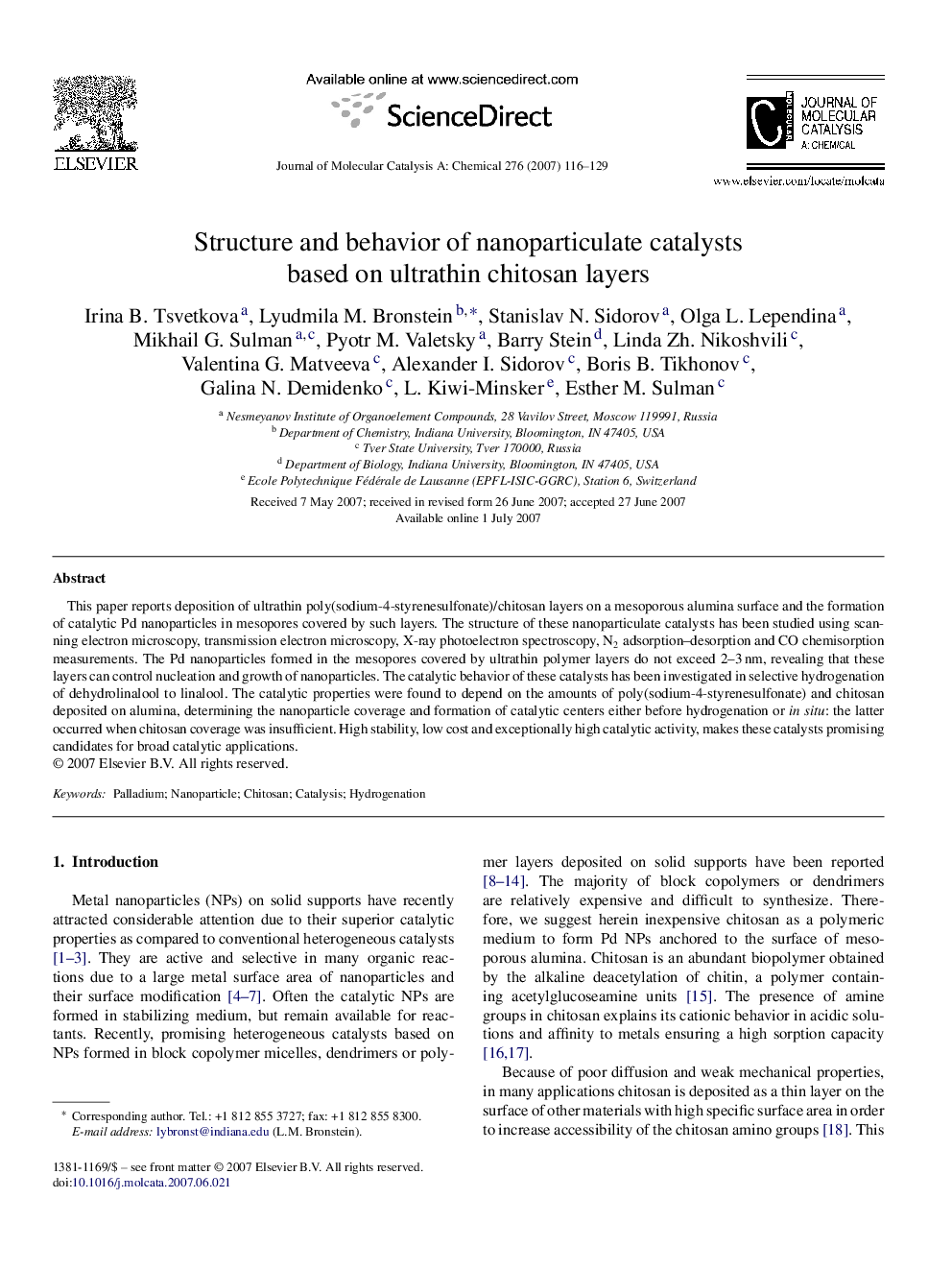| Article ID | Journal | Published Year | Pages | File Type |
|---|---|---|---|---|
| 68682 | Journal of Molecular Catalysis A: Chemical | 2007 | 14 Pages |
This paper reports deposition of ultrathin poly(sodium-4-styrenesulfonate)/chitosan layers on a mesoporous alumina surface and the formation of catalytic Pd nanoparticles in mesopores covered by such layers. The structure of these nanoparticulate catalysts has been studied using scanning electron microscopy, transmission electron microscopy, X-ray photoelectron spectroscopy, N2 adsorption–desorption and CO chemisorption measurements. The Pd nanoparticles formed in the mesopores covered by ultrathin polymer layers do not exceed 2–3 nm, revealing that these layers can control nucleation and growth of nanoparticles. The catalytic behavior of these catalysts has been investigated in selective hydrogenation of dehydrolinalool to linalool. The catalytic properties were found to depend on the amounts of poly(sodium-4-styrenesulfonate) and chitosan deposited on alumina, determining the nanoparticle coverage and formation of catalytic centers either before hydrogenation or in situ: the latter occurred when chitosan coverage was insufficient. High stability, low cost and exceptionally high catalytic activity, makes these catalysts promising candidates for broad catalytic applications.
Graphical abstractDeposition of ultrathin poly(sodium-4-styrenesulfonate)/chitosan layers on a mesoporous alumina surface and the formation of catalytic Pd nanoparticles in mesopores covered by such layers was studied. The Pd nanoparticles do not exceed 2–3 nm, revealing that these layers can control nucleation and growth of nanoparticles. The catalytic behavior of these catalysts has been investigated in selective hydrogenation of dehydrolinalool to linalool. Figure optionsDownload full-size imageDownload as PowerPoint slide
